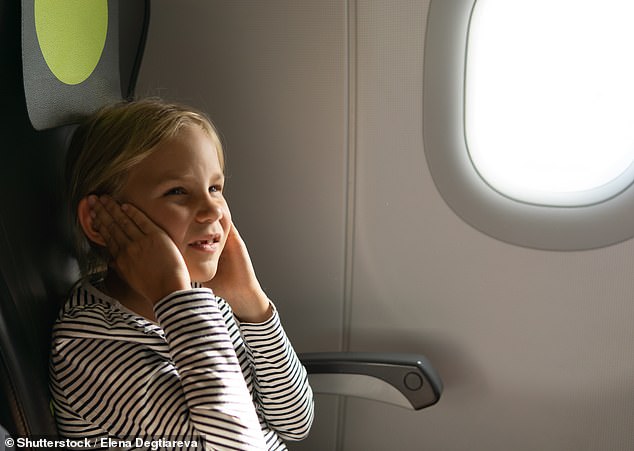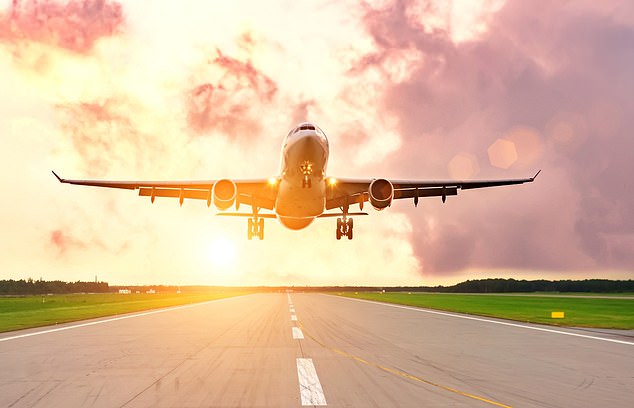- Pilot shares pearl of wisdom that could save passengers pain mid-flight
- READ MORE: Britain's dirtiest beaches revealed - with a surprising UK county receiving the most Brown Flags for 2025
It's a familiar sensation that many passengers battle when a plane takes off or lands - bringing painful ears and the feeling that someone's turned the volume down.
If it happens on the way up, it can make for a uncomfortable feeling for the duration of a flight, which isn't ideal if you're bound for the other side of the world.
Fortunately, a pilot has revealed a simple solution that can alleviate ear pain for individuals ranging from adults to children, as kids frequently endure more discomfort than the adults accompanying them during travel.
During normal ascent and descent, there's tricks that can help open the ear's Eustachian tube – which runs from your middle ear to the back of the nose – to allow the pressure in the inner ear to equalise with that outside the ear.
eSIM travel company Airalo sought the advice of pilot William Hosie, who explained exactly why so many people suffer on flights.
He said: ' Cabin pressure changes as you climb or descend in the plane. When the plane is at 35,000 feet, you're breathing air in the cabin as if you're at 6,000 feet.
'The air is thinner and the air pressure is less, which is why some people have problems with toothache, and of course ears.'
The first step should be gently blowing the pressure out from the ears.
How to do it? Simply squeeze the nose with a finger and thumb, close your mouth and start to blow slowly until your cheeks are puffed out.


Hosie provides a warning, stating not to get overly excited as it might damage the sensitive eardrums of the passengers. He notes, "A ruptured eardrum can be extremely painful and may require several weeks for recovery."
And prevention is always better than cure, he advises, saying simply taking a boiled sweet or lollipop on board can stop them from popping in the first place.
Parents traveling with infants and young children who might not comprehend ear discomfort could find some relief by offering them a bottle of milk or a pacifier, he mentioned.
These factors may lead to the widening of the passage at the rear of the nasal cavity, enabling the air pressure to balance out—thus reducing the discomfort.
In 2018, passengers on a Ryanair flight from Dublin to Croatia had to make an emergency landing in Frankfurt recently after the cabin lost pressure.
Following the ordeal, 33 passengers were treated in hospital, with some bleeding from their ears.
And last year, Delta Airlines passengers were left with burst eardrums and bleeding noses after their flight suddenly lost pressure and plummeted.
Passengers aboard a flight from Salt Lake City, Utah, to Portland, Oregon, felt the cabin lose pressure before the plane rapidly descended.
The plane experienced the issue at 10,275 feet in the air. Over the course of four and a half minutes, the plane descended from 33,975 feet to 25,075 feet, falling roughly 33 feet per second.

One passenger, Jaci Purser, said it felt like her ear was being stabbed from all of the pressure in the cabin, revealing that she 'grabbed my ear, and I pulled my hand back, and there was blood on it'.
Aircraft usually fly at an altitude above 30,000ft, climbing or descending to get there at a rate of about 2,000ft per minute.
At 30,000ft the outside air pressure is about a third of that at sea level, causing gases to expand.
For comfort and safety, aircraft cabins are 'pressurised' to an altitude of somewhere between 5,000-8,000ft, which is lower than pressure at sea level.
This is why if you take a bag of crisps on the flight, it looks like it is about to burst, or when you get to your destination your shampoo has leaked into your bag.
This pressurisation also helps to keep oxygen at a level that is safe for humans.
Normally, as the plane climbs, the air in the inner ear is at a greater pressure than the cabin because it is still the same pressure as when the aircraft left the ground, so the eardrum bulges out.
During the climb, yawning, talking, drinking or swallowing cause the pressure in the inner ear to equal that of the cabin pressure at cruise level.
When the plane descends, the air pressure in the cabin begins to increase towards that at sea level, while the inner ear remains at the lower cruise-level pressure, and so the eardrum gets forced inwards, causing muffled hearing – which you may have experienced when flying.
Read more
0 Response to "Pilot Unveils the Secret to Beating a Common Air Travel Health Woe"
Post a Comment